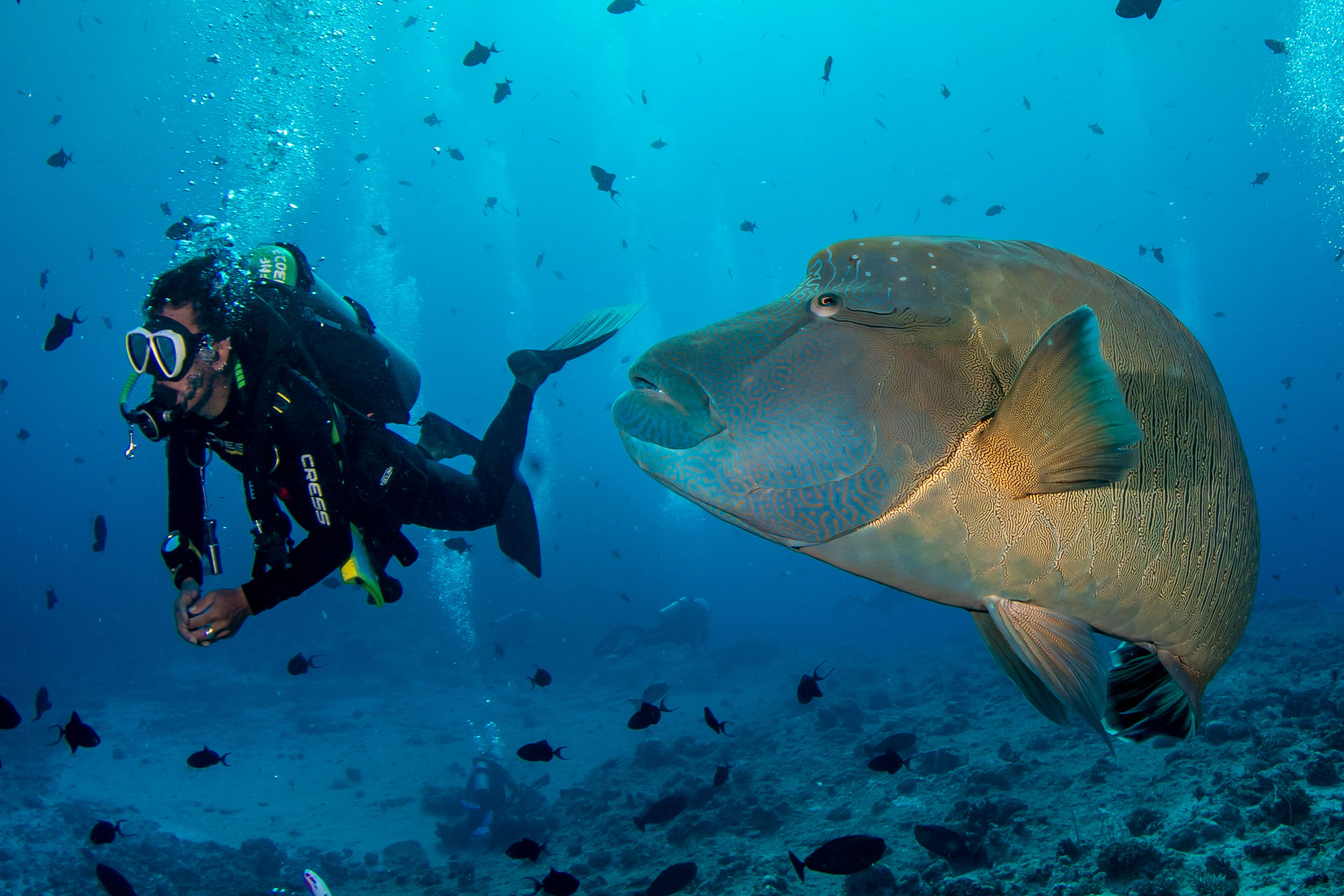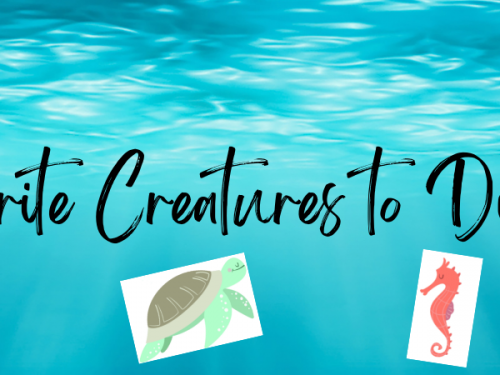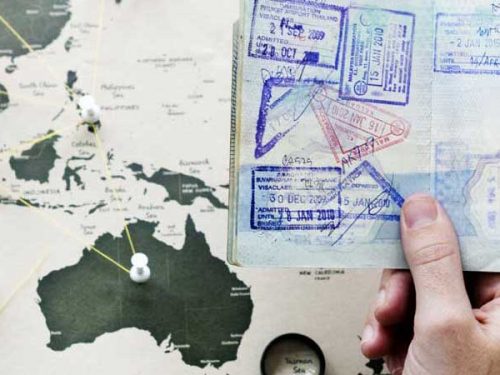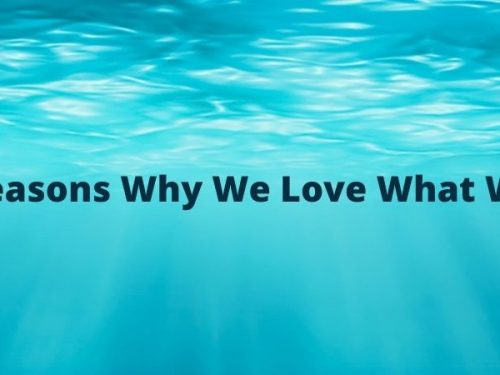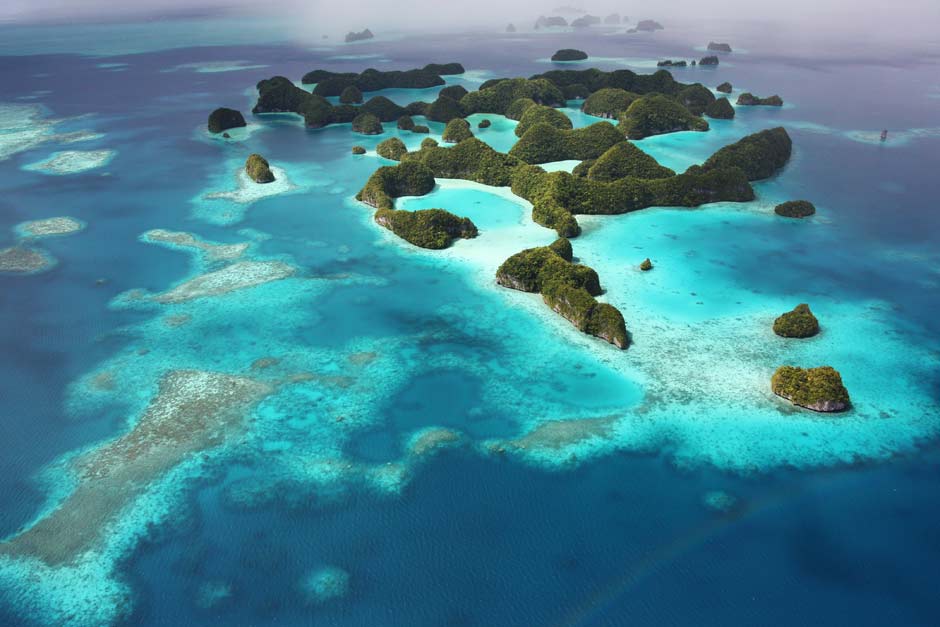 Micronesia, is an incredible group of islands in the Pacific. Unbeknownst to most people, this area represents a magical underwater world for scuba divers to discover. This subregion is comprised of 2100 islands, making four major archipelagos. The largest island is Guam. In total, Micronesia covers an area of 2,700 square kilometers (1,000 square miles), and can be divided into 4 subregions: the Caroline Islands (Federated States of Micronesia and Palau), the Marshall Islands, the Mariana Islands (Northern Mariana Islands and Guam), and the Gilbert Islands (Republic of Kiribati).
Micronesia, is an incredible group of islands in the Pacific. Unbeknownst to most people, this area represents a magical underwater world for scuba divers to discover. This subregion is comprised of 2100 islands, making four major archipelagos. The largest island is Guam. In total, Micronesia covers an area of 2,700 square kilometers (1,000 square miles), and can be divided into 4 subregions: the Caroline Islands (Federated States of Micronesia and Palau), the Marshall Islands, the Mariana Islands (Northern Mariana Islands and Guam), and the Gilbert Islands (Republic of Kiribati).
Politically, Micronesia is divided between five independent nations and three territories of the United States. One of these Micronesian countries is known as the Federated States of Micronesia is subsequently divided into four states: Chuuk (Truk), Yap, Pohnpei and Kosrae. For the purpose of this article, Micronesia refers to the region as a whole rather than the Federated States of Micronesia.
While many of the 2100 islands of Micronesia hold amazing sites to explore, Palau, Yap and Truk are the most well-known to divers. With WWII wrecks, healthy reefs, manta rays and sharks galore, it’s easy to see why these two destinations have captured the hearts of all who venture into their depths.
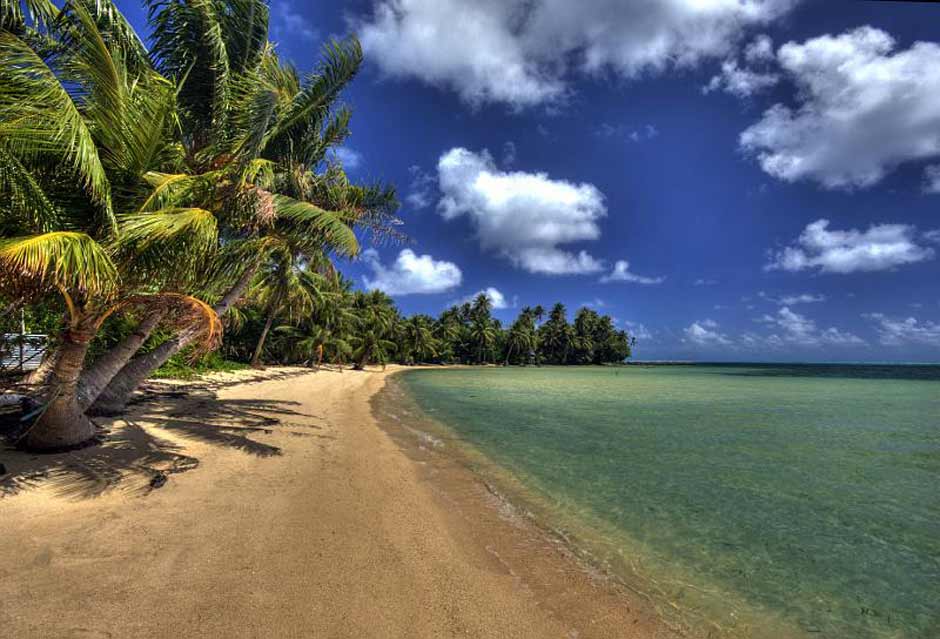 Interesting Facts About Yap
Interesting Facts About Yap
- Although the US dollar is accepted in Yap, huge circular stones, called Rai stones, are still used locally as currency. These have been a part of the Yapese culture for hundreds of years, but are never moved around the island. Instead, they are passed between families as payment, and their new ownership is recorded in an oral history.
- Mi’il Channel in Yap is a well-known manta ray cleaning station. Sightings of manta rays are “mostly guaranteed” here. These graceful creatures visit Mi’il Channel with such frequency that many even have names! Your divemaster should be able to tell you which ones you have seen.
- The state of Yap consists of 134 islands and atolls over 100,000 square miles of area. Only 22 of these islands are populated, and it wasn’t until 1989 that the state opened to tourism.
- For hundreds of years, the Yapese have been building traditional canoes. Still today, they hand-carve these outrigger vessels and sail them on arduous journeys across the Pacific to Palau and Hawaii. While you are on the island, you may have the option to take an excursion in one of these canoes!
- Navigators from Yap’s outer islands previously used an idol to aid them during a voyage. Adorned with young coconut fronds and given stingray spines as legs, the doll was held up to the winds at the beginning of a journey. The navigator would chant under it, asking for safe passage and good conditions. Throughout the voyage, the idol would remain within arm’s length of the navigator and at the end of the journey, it was returned to the navigator’s house for safekeeping until the next time it was needed.
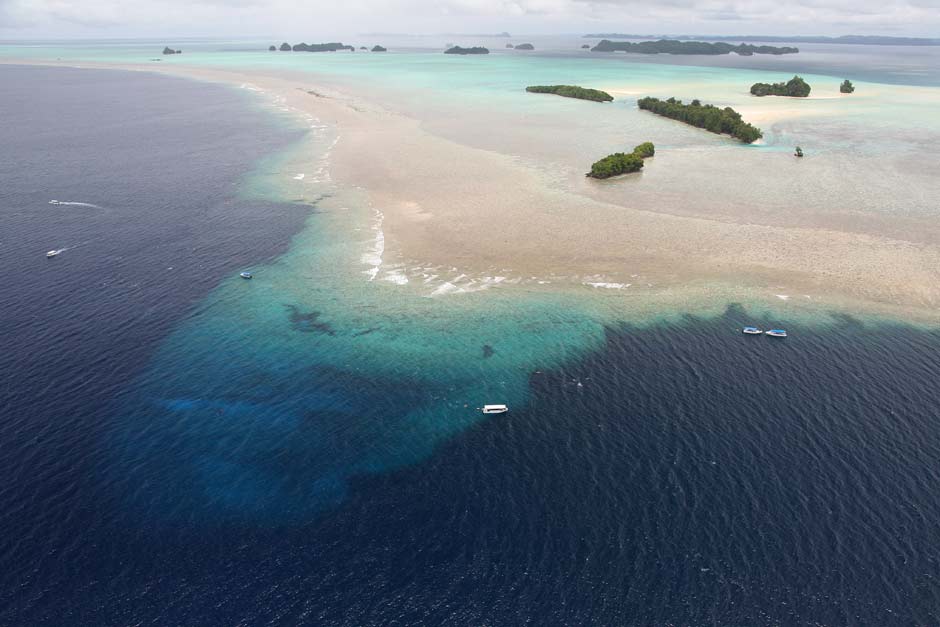 Interesting Facts About Palau
Interesting Facts About Palau
- The Blue Corner in Palau is one of the best dive sites in the world. At this coral peninsula, divers drift down the wall before hooking into the top edge of the reef. Floating in the heavy current, you’ll be surrounded by sharks, jacks and whatever other pelagic species that happen to wander by. It’s definitely a dive to remember!
- Because of its strategic position in the Pacific, Palau and the other islands of Micronesia were important battlegrounds during World War II. While nearby Chuuk may be more famous for its wrecks, the Helmet Wreck in Palau is also noteworthy. This ship was commandeered by the Japanese and later sunk, but not before being struck with seven 500-pound bombs and four rockets. Today, divers can enjoy the massive ship along with its cargo, including stacks of helmets (hence the name).
- Off the coast of Koror, the Rock Islands contain about 70 marine lakes. One of these is home to a plentitude of mastigias jellyfish. These are completely harmless to most humans, and a popular day trip in Palau is to go snorkeling with these beauties in the aptly named Jellyfish Lake (Update October 2018: Jellyfish Lake has been closed now due to increased stress to the dwindling jellyfish population from droughts, tourists etc. We are hoping they will recover, and this intriguing excursion will eventually become available again).
- During full moon and new moon periods, Palau becomes a spawning site for hundreds of red snappers and bumphead parrotfish. Naturally, these aggregations attract both large predators and scuba divers alike. If you’re interested in this phenomenon, look out for liveaboards with special spawning itineraries.
 Palau is sometimes called the “Underwater Serengeti” because its waters are teeming with marine life. From huge schools of tropical fish to turtles, sharks, dugongs and rays, you never know what you might see during a dive in Palau.
Palau is sometimes called the “Underwater Serengeti” because its waters are teeming with marine life. From huge schools of tropical fish to turtles, sharks, dugongs and rays, you never know what you might see during a dive in Palau.- Considered a delicacy, Palau has a small fruit bat that is only found here. The bat is cooked in boiling water (fur and all!) and added to spices and vegetables. It is then served in a bowl, staring up at you. The standard method of eating the bat, is to chew it and suck out the meat. Yum!
Yap vs. Palau
While Yap and Palau may be close geographically, the islands offer far different experiences.
Palau, on one hand, is a major scuba diving destination. The dive industry on the islands is well developed. This isn’t a sleepy island paradise, and you’ll most likely have to share your dive sites with other groups. However, the diversity of dive sites and marine life in Palau is hard to beat. Many divers make Palau their main destination and add Yap as a small side trip. For the most variety in terms of diving and the best topside amenities, you should choose Palau over Yap.
Yap, on the other hand, is more off the beaten path. The main attractions in this Micronesian state are manta rays and topside culture, but other dive sites boast healthy corals and penetrable caverns. The pace is a slower on Yap than Palau and you’re more likely to find more personalized service at Yap’s dive centers. For a laid back holiday with few other tourists, Yap should be your destination of choice.
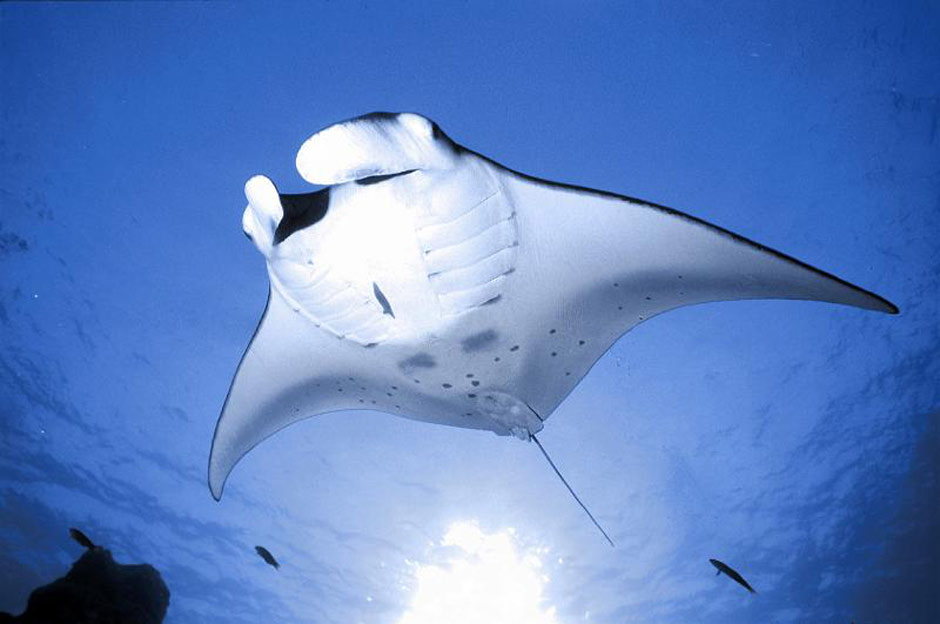 If you’d like to learn more, click here to read about scuba diving in Micronesia.
If you’d like to learn more, click here to read about scuba diving in Micronesia.
Ready to discover the magic beneath the surface in Yap and Palau? To get the most diving for your dollar, in Palau especially, book a liveaboard trip through the islands. Check out these amazing options.
Want to take advantage of Micronesian culture and land-based excursions while enjoying the best diving in Yap and Palau? Then a dive resort is for you. For an exceptional land-based dive vacation in Yap, consider Manta Ray Bay Resort, or contact us for alternate suggestions.
If you can’t decide between Yap and Palau, dive them both with our pre-packaged dive vacation option called Independent Journeys. Don’t worry about booking inter-island flights or making any other arrangements. We’ll take care of these worrisome details for you! All we ask is that you enjoy Micronesia, a world-class diving destination.


